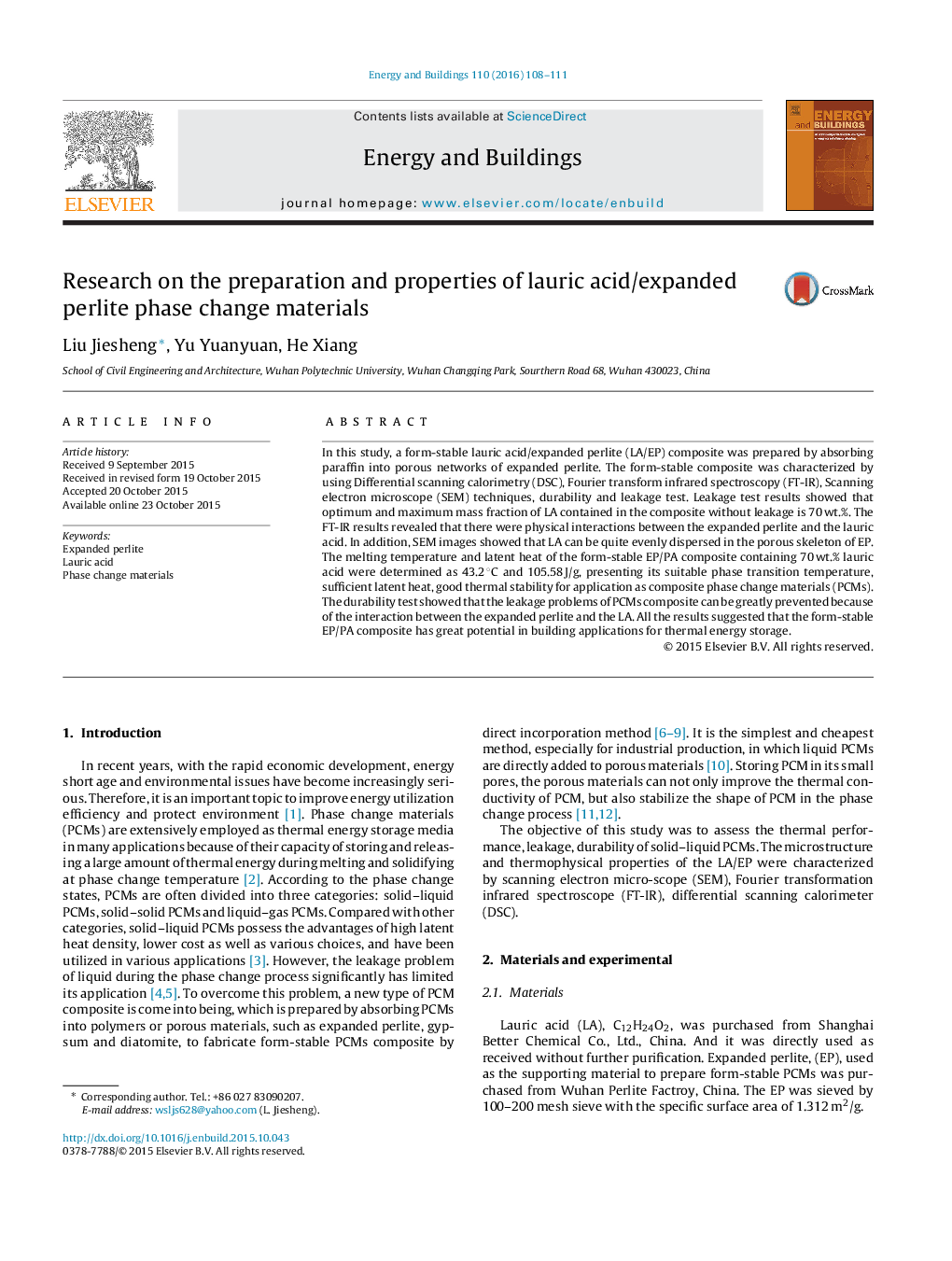| Article ID | Journal | Published Year | Pages | File Type |
|---|---|---|---|---|
| 262263 | Energy and Buildings | 2016 | 4 Pages |
•The best weight ratio of LA was 70%.•LA can be quite evenly dispersed in the porous skeleton of EP.•Physical interaction existing between the expanded perlite and the LA makes PCMs stable.
In this study, a form-stable lauric acid/expanded perlite (LA/EP) composite was prepared by absorbing paraffin into porous networks of expanded perlite. The form-stable composite was characterized by using Differential scanning calorimetry (DSC), Fourier transform infrared spectroscopy (FT-IR), Scanning electron microscope (SEM) techniques, durability and leakage test. Leakage test results showed that optimum and maximum mass fraction of LA contained in the composite without leakage is 70 wt.%. The FT-IR results revealed that there were physical interactions between the expanded perlite and the lauric acid. In addition, SEM images showed that LA can be quite evenly dispersed in the porous skeleton of EP. The melting temperature and latent heat of the form-stable EP/PA composite containing 70 wt.% lauric acid were determined as 43.2 °C and 105.58 J/g, presenting its suitable phase transition temperature, sufficient latent heat, good thermal stability for application as composite phase change materials (PCMs). The durability test showed that the leakage problems of PCMs composite can be greatly prevented because of the interaction between the expanded perlite and the LA. All the results suggested that the form-stable EP/PA composite has great potential in building applications for thermal energy storage.
Graphical abstractFig. 4 shows that the LA has been absorbed in the pores and on the surface of EP, and the edge of EP turns smooth and round. The porous structures of the EP provided the mechanical strength for the whole composites and prevented the seepage of the melted fatty acids and results in the excellent stability during durability test. due to the effects of capillary and surface tension force between the components of the composites.Figure optionsDownload full-size imageDownload as PowerPoint slide
